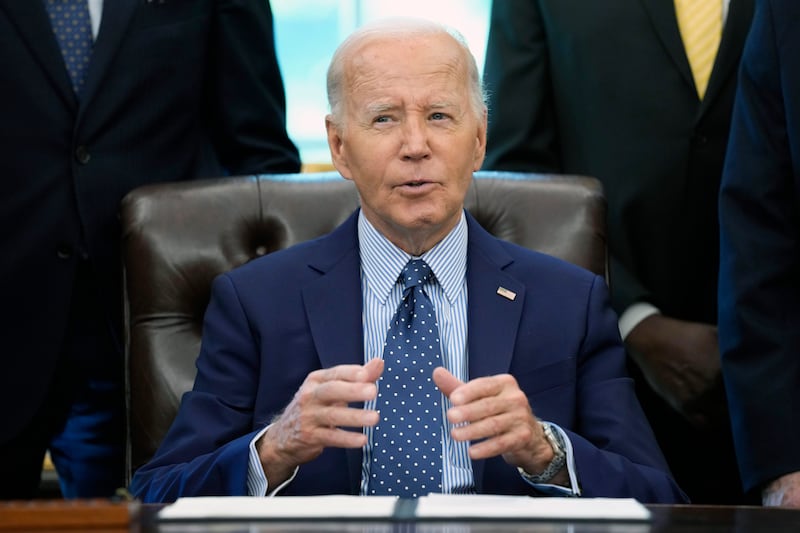The commutations granted by former President Joe Biden have been under scrutiny for being signed by an autopen device in the final hours of his administration.
President Donald Trump and his circle claim Biden didn’t approve the pardons and that his aides were the ones pulling the strings. Trump’s Justice Department launched an investigation into the Biden White House’s clemency decisions.
Biden spoke to The New York Times Thursday and revealed how his administration came to its decisions.
He pardoned his son, Hunter Biden, in December for any offenses committed over the course of a decade. At the time, he justified it by saying his son was singled out and would have otherwise received a plea deal over his two convictions related to an illegal firearm purchase and unpaid taxes.
But that’s not all. The same month, the Biden White House also commuted the sentences of nearly 1,500 people on house arrest and pardoned 39 people serving time for nonviolent crimes.
In January, he pardoned 2,500 nonviolent drug offenders and issued a preemptive presidential pardon for who he said were potential targets of the at-the-time incoming Trump administration. The names included several family members of Biden’s as well as Dr. Anthony Fauci and congressional lawmakers on the House Jan. 6 committee.
Here are four insights from his 15-minute interview with the Times.
Biden calls Republicans ‘liars’ over autopen allegations
The former president pushed back against the accusations from Republicans, calling them ‘liars.
“I made every single one of those” decisions, the former president said in the interview. “Including the categories, when we set this up to begin with.”
Biden says use of autopen is ‘legal’
He also defended his use of the autopen, saying it’s “legal” and that “other presidents used it, including Trump.”
“But the point is that, we’re talking about a whole lot of people.”
Biden said he didn’t personally sign the official warrants.
Biden defends pardoning his family members
Although they weren’t charged with any crimes, Biden pardoned his brother James, his sister, Valerie, and his brother Francis, as well as their spouses.
The former president said he knows “how vindictive” Trump is and knew he would go after Biden’s family when he got the chance.
“My family didn’t do anything wrong,” he claimed.
“I just know how he operates,” he told the Times. “And so I made — but I consciously made all those decisions, among others."
The categories in Biden’s pardoning system
The former president explained the system his office used to make a decision.
They didn’t read out each name for the commutations of those serving house arrest since the pandemic.
“So the only things that really we read off names for were, for example, you know, was I, what was I going to do about, for example, Mark Milley?”
Milley, a U.S. Army general, served as the Chairman of the Joint Chiefs of Staff under Trump and Biden, had criticized Trump, saying he was “fascist to the core.”
He received a full and unconditional pardon from Biden.
“Mark’s a good guy,” the former president said. “We know how vindictive Trump is and I’ve no doubt they would have gone after Mark for no good reason.”
Although Milley is safe from prosecution, Trump’s Pentagon pulled Milley’s security clearance and revoked his personal security detail on Jan. 28, as Reuters reported.
When Milley’s name came up, Biden said he wanted to make sure the retired Army general would be safe.
Biden insisted that he was “deeply involved” in the process, including laying out the strategy.
“I pulled the team in to say this is how I want to get it done generically and then specifically,” he added.


